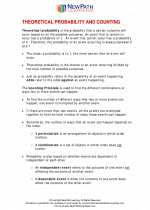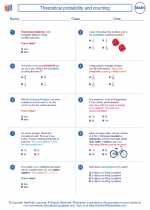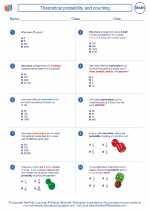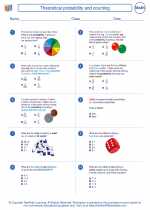Perpendicular Bisector
A perpendicular bisector is a line, segment, or ray that intersects another line segment at a 90-degree angle and divides it into two equal parts.
Properties of Perpendicular Bisector
- It always passes through the midpoint of the line segment.
- It forms right angles with the line it bisects.
- It divides the line segment into two equal parts.
How to Find Perpendicular Bisector
To find the perpendicular bisector of a line segment, follow these steps:
- Locate the midpoint of the line segment.
- Draw a line that passes through the midpoint and is perpendicular to the given line segment.
Example
Given the line segment AB, with A(2, 4) and B(6, 8), find the perpendicular bisector of AB.
First, find the midpoint of AB: ( (2+6)/2, (4+8)/2 ) = (4, 6).
Next, the slope of AB = (8-4) / (6-2) = 4/4 = 1. The negative reciprocal of 1 is -1. So, the slope of the perpendicular bisector = -1.
Using the point-slope form, the equation of the perpendicular bisector passing through (4, 6) is: y - 6 = -1(x - 4) or y = -x + 10.
Therefore, the equation of the perpendicular bisector of AB is y = -x + 10.
Study Guide
When studying perpendicular bisectors, make sure to understand the following concepts:
- Definition and properties of perpendicular bisector.
- Finding the midpoint of a line segment.
- Using the midpoint to find the equation of the perpendicular bisector.
- Understanding the relationship between slope and perpendicular lines.
Practice drawing perpendicular bisectors and finding their equations for different line segments to reinforce your understanding of the concept.
Understanding perpendicular bisectors is important as it is a fundamental concept in geometry and plays a significant role in various geometric constructions and proofs.
.◂Math Worksheets and Study Guides Eighth Grade. Theoretical probability and counting

 Worksheet/Answer key
Worksheet/Answer key
 Worksheet/Answer key
Worksheet/Answer key
 Worksheet/Answer key
Worksheet/Answer key
